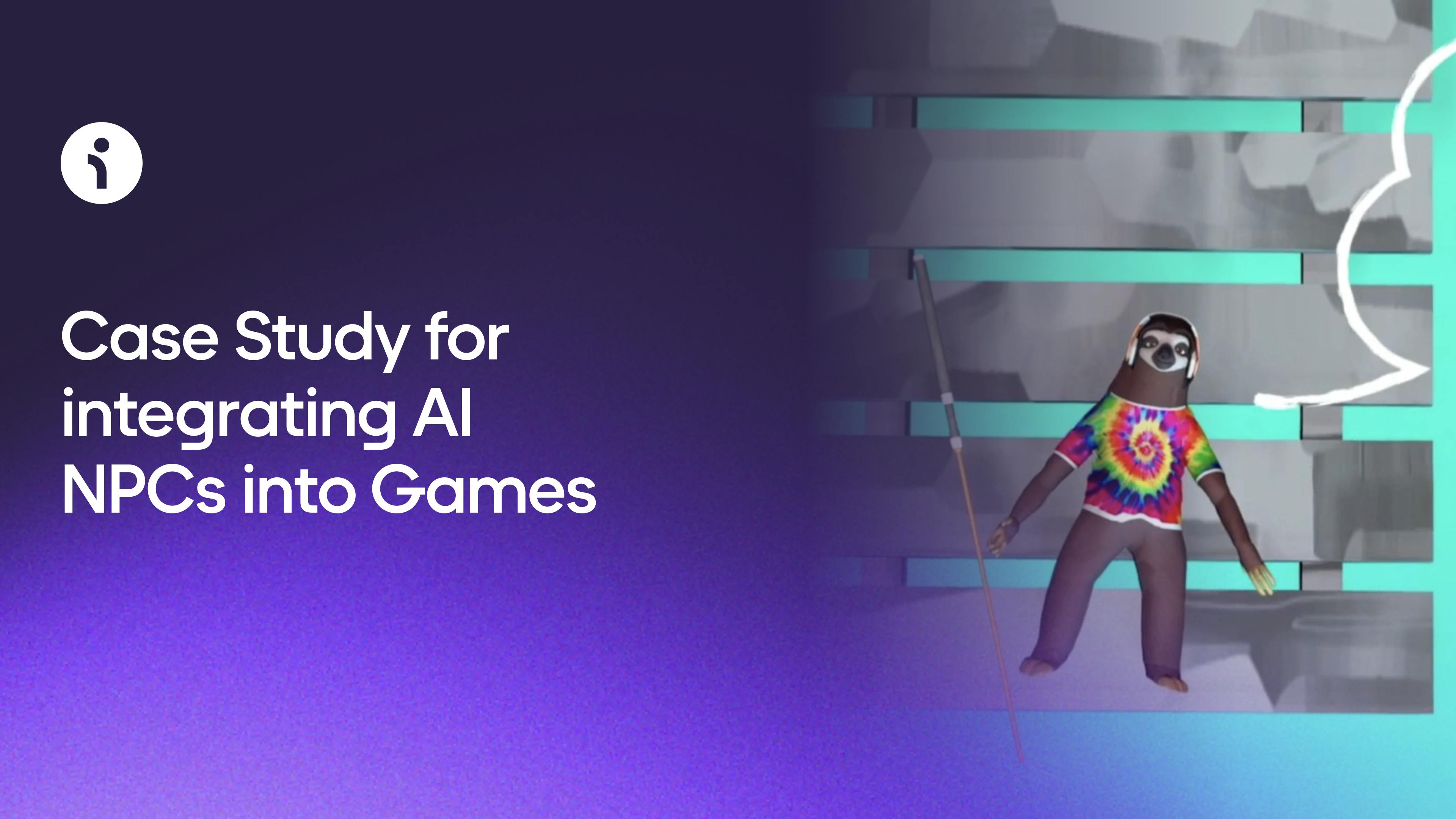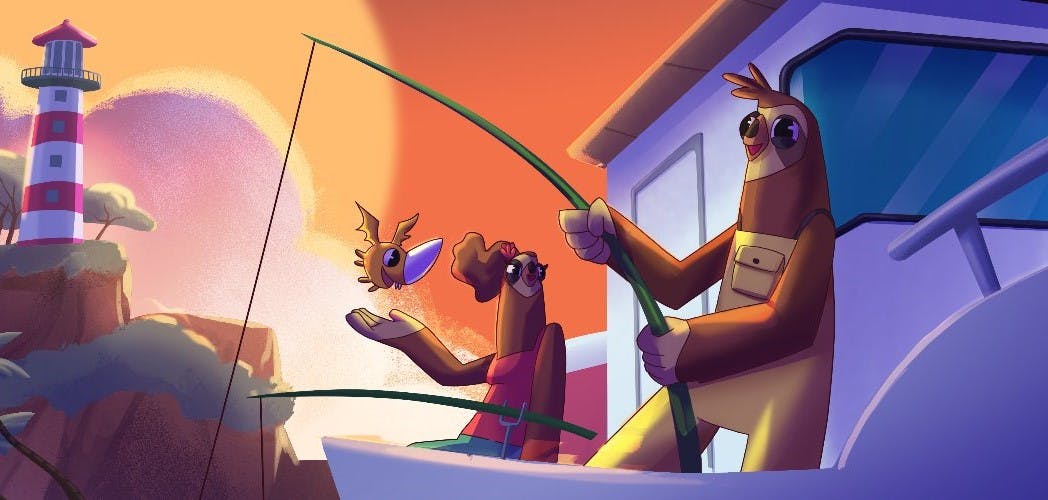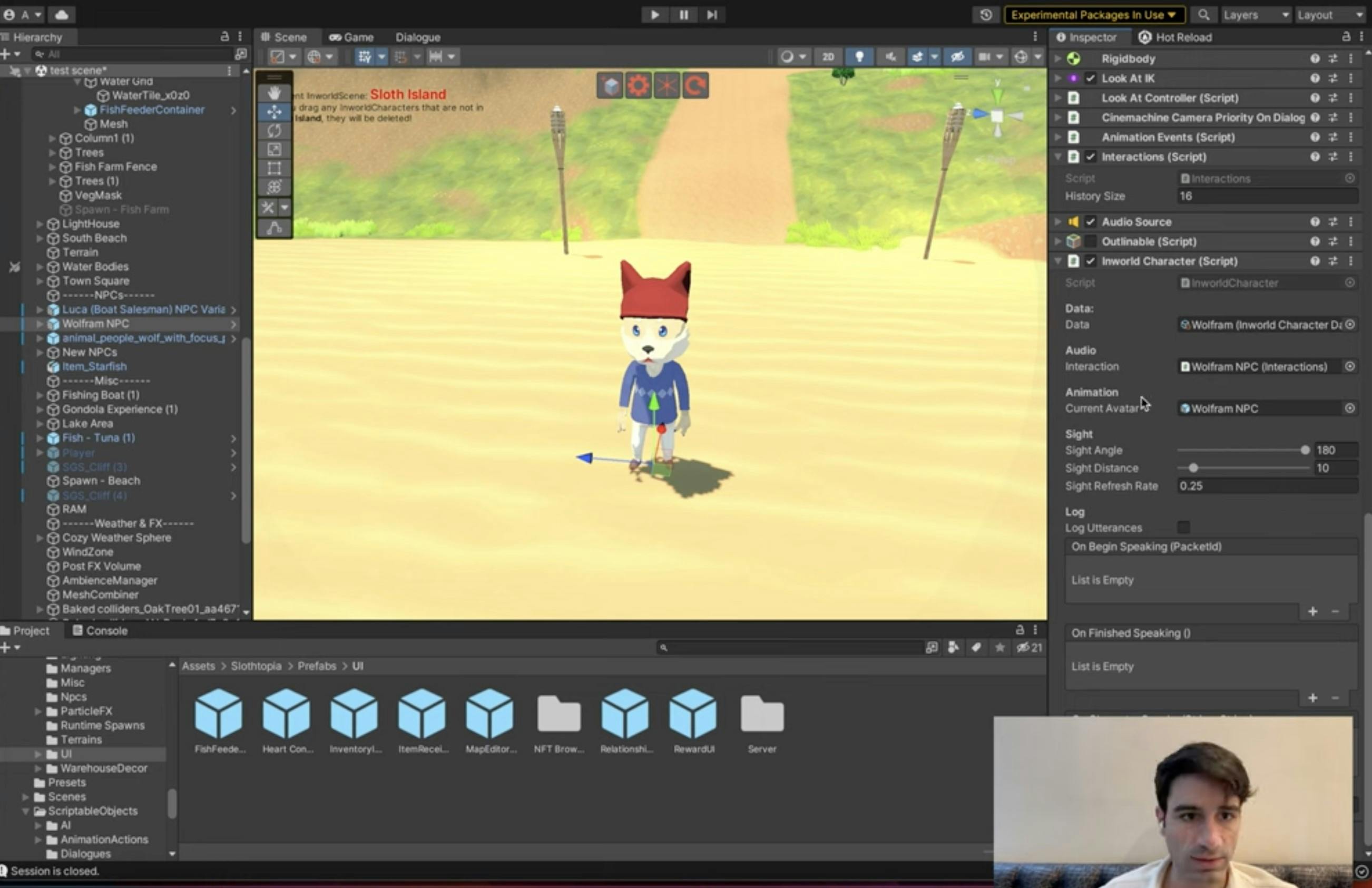How Slothtopia integrated AI NPCs into a social game
Inworld's AI NPCs are set to redefine the social sims gaming experience

Overview
Slothtopia is a Unity-based social sim game that revolves around a sloth taking care of their family's fish farm – cue lots of cute animals and trips to go fishing. The game offers players a variety of activities to choose from – including farming, cooking, resource collection, and even riding in gondolas. But Slothtopia's developers were looking for a way to differentiate their game from other social sim games like Animal Crossing.
They found their answer in Inworld’s Unity integration.
Challenge
With the gaming industry becoming increasingly competitive, game developers need to stand out by offering players unique experiences. Slothtopia's CTO, Liam Nabut, wanted to create an immersive gameplay experience that would differentiate their game. He was struggling to find ways to improve user engagement and add a new dimension to social sims.
“When an NPC runs out of things to talk about they just start spitting out the same thing over and over and over again,” Liam explained.
His dedication to designing immersive and innovative player experiences made him explore several ways to make Slothopia stand out.
Despite creating Web3 skins that players could purchase, he found out that wasn’t enough to stand-out anymore. It was clear that Liam needed to find a new feature that would shake up the social sim world. That made him return to the basics of social sims. They’re all about building relationships with NPCs, right?
So, the question was, how could Slothtopia improve on the way relationships are built in game worlds?

The Context
Liam’s challenge wasn’t just how to stand out in a noisy market – he also had to fight the regular time-pressures, technical issues, and creative work that are unavoidable in game development.
Conversation Trees
One of the most time-consuming and mundane parts of game development can be writing the dialog for character interactions. Line by line, developers type out prompts and answers until they have thousands of lines of dialogue setup in a massive conversation tree.
Technical Overhead
Hosting and managing conversations can be a challenge as well. Managing in-game dialogue requires dedicated systems that manage prompts and responses. The storage requirements are heavy, it can affect performance, and it often becomes a bulky part of the game package. This means that even with a comprehensive conversation tree, developers still have to integrate other services to make them perform and feel like real conversations.
Scalability
Each time a new NPCs is introduced into the game, a new conversation tree has to be written and new code added into the game package. This creates an incentive for indie games to have just few well-developed NPCs in an effort to reduce development time, costs, and bulkiness. Liam, and his lightweight team, didn’t have the capacity to write hundreds of meaningful NPCs into the story of Slothtopia. Despite their passion for the player experience, they ultimately had to limit time spent on character development so that they could get to the other parts of the game they needed to finish – while staying on budget.
Indie game developers like Liam have long wished for a new way to manage these challenges in less time, with less technical over-head, and in a more scalable and dynamic way.

Why Inworld?
Liam's quest to improve how players explored the world and built relationships in Slothtopia ultimately led him to discover Inworld.
Liam quickly realized that Inworld's emotion engine was the perfect tool to help him create a world where players could connect with their AI companions and create meaningful relationships. The ability to add detailed character details to NPCs in Slothtopia allowed him to create human-like NPCs that have their own stories, personalities, and motivations.
With Inworld, Liam was confident that he'd found the super-power that Slothtopia needed to deliver a player experience that would increase user engagement and differentiate Slothtopia from the crowded social sim market.
He didn’t have a tough time convincing the decision makers at his studio to give Inworld a try. Slothtopia's CEO told him to integrate it ASAP.
Results
Inworld took all of the challenges Slothtopia was facing around conversation design, technical overhead, and scalability and provided an easy-to-use, stand-alone solution to them. According to Liam, that cut costs, effort, and time. It also improved creativity, scalability, and performance.
More importantly, it was simple to add Inworld into Slothtopia. “I thought this could take me maybe a week or two to integrate into our system,” Liam said, “but surprisingly it was really easy.”
What Liam loved even more was how rich Inworld made the characters. “You can cut down vastly on the amount of time needed to give life to these characters because Inworld will generate all of that on the fly,” he said. ”Inworld allows you to have these dynamic, real-time, conversations with NPCs. Conversations where if you don’t want them to end, they never will.”
Better yet, Inworld has already helped Slothtopia in their marketing. Their social media following increased significantly since they announced the integration and their recent Kickstarter raised 2.5x their funding goal in the first two days!

Ways Inworld helped
- No more predictable conversation trees
- No more player time wasted clicking through conversation prompts
- Players get a much more immersive experience
- Increased community engagement
- Slothtopia’s social media following grew when they announced the integration
- Raised 3x their Kickstarter
Impact
“Inworld's characters makes our game feel a lot more immersive, it makes it feel like you’re building a real relationship,” explained Liam.
He believes that Slothtopia created a much more immersive and dynamic gaming experience by leveraging Inworld’s platform – one that's already resulted in increased player engagement and longer play sessions.
As they prepare to launch the game more broadly, Liam is excited about bringing Slothtopia to more players since NPCs powered by generative AI have never been offered in a social sim before.
We can’t wait to see what Slothtopia does next with Inworld in their toolbox!
Want to create an innovative game, too?
- Read more case studies from gaming companies who integrated Inworld’s AI Engine.